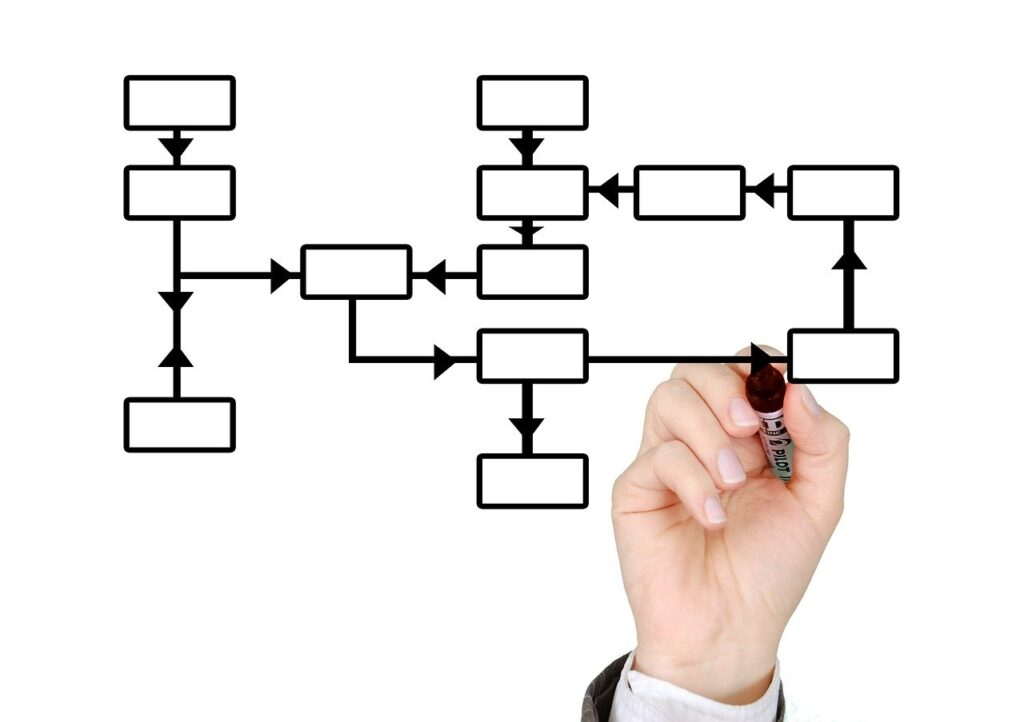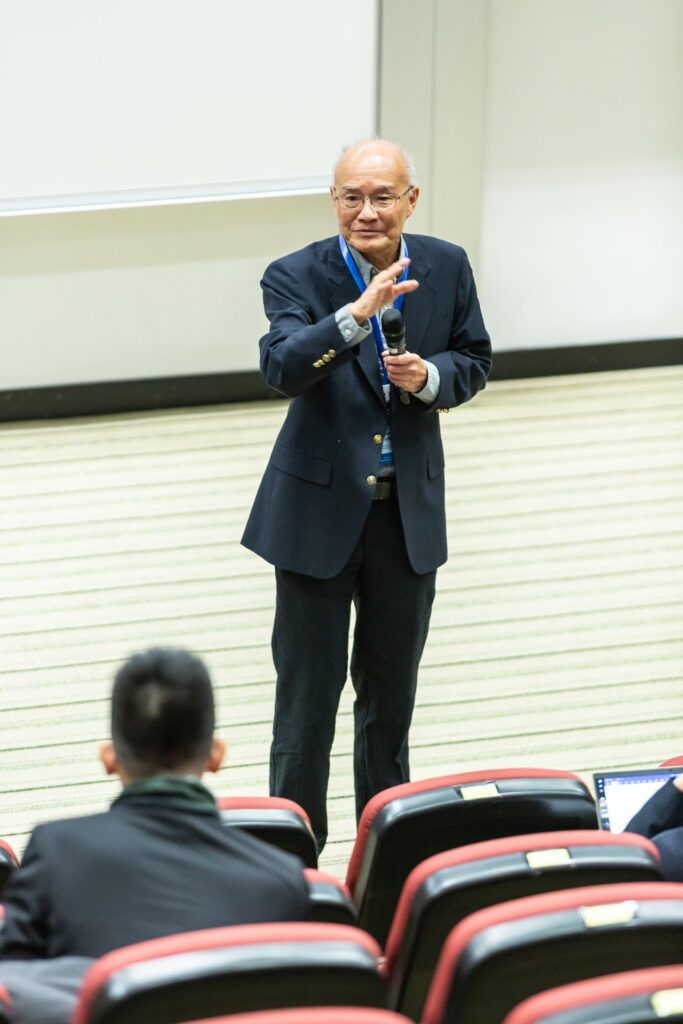Fast-growing multi-national companies have many challenges to deal with, for example
- Organizational inefficiencies
- Rising complexities
- Cash flow crunch
- Difficulty keeping up with customer service issues
- Resistance to change and unwillingness to adapt from employees and managers
- Inconsistent management styles
Just to name a few. But while growth can of course generally be considered a good thing, any and all of these issues, if left unchecked, can bankrupt a company and destroy its value.
That would already be enough to make life interesting, if not downright difficult. But now imagine that your industry is going through some extreme changes on top of that — like the automotive industry is currently doing. Suddenly, a company going through the above-mentioned challenges of fast growth also faces a steep decrease in orders.
Can you hear the alarm bells going off in your head already?
Take a deep breath! You aren’t the only one. In fact, we have an intriguing case of a Swiss multi-national corporation and supplier in the mechanical engineering space, facing a lot of the same challenges you may be experiencing yourself right now. Even if they’re not exactly the same, our discussion and evaluation of the challenges, as well as our proposed solutions, may give you a lot of insight into how to tackle your own challenges — and succeed.
Fast Growth and Order Declines: The Thing Bankruptcy Stories are made of
Imagine the following scenario of our Switzerland-based multi-national corporation — let’s call it Swiss Multi* — with customers in the automotive industry. Swiss Multi employs over 2,000 people worldwide and provides sales and service support in over 60 countries through subsidiaries and independent agents.
Swiss Multi has always operated on value-driven leadership, which served it well so far. The company has grown fast, first by expanding HQ and then by acquiring a handful of small to medium-sized international companies in the last ten years. All this time, Swiss Multi has focused solely on the automotive sector.
The corporation is currently struggling with two major challenges:
1. Organizational Inefficiencies
The fast growth and subsequent change management efforts have put the company’s structures and processes into a state of constant flux, never allowing them to level off and stabilize. Things aren’t running as smoothly on the organizational front as Swiss Multi’s leaders would hope.
2. Order Decline
Because of the current economic decline in the automotive industry, Swiss Multi’s main customers have been going through cutbacks in the past couple of years — and Swiss Multi is one of the suppliers who are really feeling these cutbacks in the form of drastic order decline.
In the last fiscal year, Swiss Multi generated only 400 million Swiss Francs in revenue, a decrease of 15% compared to the previous year. Sales have plummeted by 17% while costs have skyrocketed due to the company’s fast growth, leading to a nosedive in profits (EBIT) from formerly 15% to 6%.
Trouble is, Swiss Multi doesn’t have other sectors up their sleeve to turn their focus to, while the automotive branch struggles to recover. Swiss Multi can fight for their piece of the shrinking cake or wait for the automotive branch to recover — which isn’t exactly predictable.

Exacerbating Factors
With revenue sinking like a brick in water, cutting costs is inevitable. But of course, cutting costs shouldn’t come at the expense of Swiss Multi’s employees or the structures they’ve been working to develop. If at all possible, the company wants to avoid letting good, knowledgeable personnel go, or to have to stall or reverse the organizational progress already made throughout their change management efforts.
Added to that, the general managers of Swiss Multi’s national subsidiaries are also unhappy; the management board itself doesn’t seem to be living by their self-proclaimed approach of value-driven leadership, stating that “we have other problems to deal with right now, we can’t focus on furthering leadership values”. Meaning that values like quality, innovation, and responsibility feel inconvenient and end up falling by the wayside.
It doesn’t help that, on top of all this, the top executives in the US have identified specific, untackled challenges posed in Swiss Multi’s leadership development, because, as already stated, there are greater challenges to be dealt with.
But are there really?
Don’t misunderstand; any and all of these challenges absolutely must be addressed if Swiss Multi hopes to continue being successful and step back to the top. A case could be made, though, that if the corporation already had a host of true global leaders, they would have been able to foresee and predict these challenges arising — and would have known what measures to implement to avoid them ever becoming a problem.
Let’s put a pin in this issue for a second, since there’s no point in crying over spilled milk. First, we’ll have a look at Swiss Multi’s goals, which have been set to try to turn the situation around. Then we’ll discuss exactly how Swiss Multi should go about meeting those goals.
Goals to Get Back on Track
Swiss Multi has a good grasp of their objectives in order to face the above-mentioned challenges.
First and foremost, they’re targeting a strategy change with regard to their laser-focus on one industry. The goal is to become more independent from the automotive sector and diversify sales channels. Gaining new markets, for example in aircraft engineering, will help boost sales and make them less vulnerable to fluctuating industries.
Second, Swiss Multi strives to allow its organization to finally settle down and stabilize. All the fast changes and add-ons in the last decade have left complex and inefficient structures, with confusing redundancies and unclear chains of command. The plan is to support the independently laboring national organizations by consolidating structures and processes.
Reaching either of those goals won’t be easy, considering the extent of the changes implemented in the company over the last ten years. It hasn’t just grown; it has exploded. The added companies brought with them new products, as well as their own structures and ways of doing things, which lead to extremely high complexity of organizational structures, modes of operation, and diverse product range.
An overarching change management strategy has to be implemented to consolidate them all. But leaders must master change management on a global scale in order to be able to implement it in the individual subsidiaries and stop the collapse of structures currently in flux. And they will have to do so in the face of strict cost reductions while trying to maintain existing jobs and preventing a brain drain.
Not an easy task. Which is why Swiss Multi has decided to focus on the following solution strategy.

The Fix: Implementing an In-House Global Leadership Development Program
Remember the pin we put in the topic of the company not having the leadership necessary to understand that the company was
- taking a big risk in focusing only on one industry and market, and
- not properly tackling the change management necessary to deal with the company’s rapid expansion.
According to the World Economic Forum 2013, “the global leadership vacuum remains the biggest challenge of all for 2013 and beyond”. This hasn’t changed in the past seven years. Of the 52% of multi-national corporations that plan to expand their operations, only 16% have enough global leaders to fill these critical roles, and many companies have had to cut back on global strategies due to their lack of adequately prepared global leaders. This lack leads to challenges like the following:
- Leaders struggle with increasing complexity, ambiguity, and uncertainty in their day-to-day tasks, thus leading to shrinking market shares.
- Leaders are unsure of how and when to adapt their leadership style to fit local circumstances, failing to achieve corporate objectives.
- Companies struggle to align their corporate strategy with multi-cultural dynamics — and so their organization is being out-competed in global markets.
These are only some of the challenges that can arise from a lack of adequately prepared global leaders but, in the context of Swiss Multi, they sound familiar, right? These are exactly the things the company has been struggling with.
Enter the European Academy for Executive Education, or eurac, an integrated international business school, which provides comprehensive and practical, state-of-the-art leadership- and coaching trainings for senior and top management in all industries. This includes supporting multi-national companies in setting up their own in-house global leadership (GLD) development programs.
In fact, eurac knows exactly how they would approach setting up such a GLD program at Swiss Multi:
1. Target Planning
The first step is always to define goals and goal-required competencies of all leaders involved. Together with the company, or the company’s decision-maker, eurac defines the goals the leaders are supposed to achieve by participating in the GLD program. Based on these goals, they define the competencies necessary to accomplish them.
Key competencies of aspiring global leaders are:
It’s important to remember in setting these goals and core competencies of the GLD program, to follow the overarching strategic path set out by Swiss Multi itself. The company must lay out the path so that the GLD program can work within that structure.
With Swiss Multi’s overarching strategy in mind — diversifying markets and stabilizing the organizational structure — the main competencies that need to be developed and trained should focus on the categories Global Business Expertise and Multi-Cultural Competencies.
These will also have to be broken down to the level of each national subsidiary under the company’s internationally spanning wing. Stabilizing the structure across the entire organization means defining subgoals in each location — which may result in varying emphasis and approaches in training global leaders.
2. Choosing the Right Participants for the Program
Not everybody is cut out to be a global leader within the frame of the pre-set goals. Choosing people who fit, is therefore important for participants to do a good job in fulfilling those goals; but also from a financial point of view. There’s no point in taking on the expenditure of training someone who doesn’t have the stuff to be a successful global leader. That being said, eurac does believe that anybody can become a global leader — as long as they set their mind to it and are willing to work on themselves.
With that in mind, Swiss Multi’s perfect potential program candidates, who exhibit all the necessary competencies, skills, traits and attitudes of global leaders, are
- leaders of the national subsidiaries,
- international leaders, and
- cross-functional leaders within the company’s matrix organization.
Together with eurac, Swiss Multi must evaluate these leaders’ current abilities and compare them with the two determined key competencies (Global Business Expertise and Multi-Cultural Competencies) to weed through the candidates and determine the participants in the GLD program for each subsidiary.
3. Individual Assessment of Participants
For a GLD program to be most effective, all selected leaders must join every single training and cannot cherry-pick what parts of the program to participate in. Based on the predetermined goals and objectives, eurac will determine and suggest the best mix between one-on-one coachings and consulting, as well as group training, that will work best with the selected leaders. The leadership development training is always goal-oriented, and often takes the form of coaching or in-person training.
Before we can jump into setting up the necessary individual training programs, each participant must be assessed and evaluated to determine in which skills and competencies they’re lacking. This is the only way to determine individual goals for each participant. Based on this assessment, the GLD program then fills the gap between the current competencies that the leaders hold and the competencies required to carry out the job effectively.
In Swiss Multi’s case, based on the key competencies to be developed and trained, the participants would be assessed predominantly in the following competencies and their dimensions:
- Global Business Expertise
- Vision And Strategic Thinking
- Being Business Savvy
- Managing Communities
- Being Organizational Savvy
- Leading Change
- Multi-Cultural Competencies
- Cultural Sensitivity
- Cultural Intelligence
- Mindful Intercultural Communication
Based on the results of these individual evaluations, as well as the goals and subgoals of each subsidiary, eurac can develop the best training plan for each participant, comprised of the best mix between:
- online e‑learning,
- individual coaching,
- team coaching, and
- practical onsite training at the national subsidiaries.
Once the training is complete, eurac reevaluates the participants’ abilities and measures their improvements by re-assessing their competencies and skills to decipher improvements.
After a successful run through the in-house global leadership program, the participating leaders will have gained all the competencies and skills needed to solve the current challenges and lead Swiss Multi to its goals.

4. The Time Frame
eurac CEO and global leadership expert Dr. Wolfgang Schmitz knows that prepping for the program takes between five to six weeks, depending on the size of the company and the number of candidates.
For Swiss Multi, the preparation period would be set to the following time frame:
- Target Planning — 1 week
- Choosing the Participants — 2 weeks
- Individual Assessment of Participants — 3 weeks
After that, things depend not only on the size and goals of the company but also on a myriad of other details. This makes it difficult to predict a specific time frame, which differs from organization to organization.
If all participants and parties involved prioritize their training and put in maximum effort and zeal, the GLD program of a company the size of Swiss Multi could be completed within a year. In practice, this isn’t realistic; not because the program isn’t effective or because participants wouldn’t take it seriously or give it their best effort, but because they are still running the company, their subsidiaries, and their teams at the same time.
A realistic and achievable time frame for the completion of Swiss Multi’s GLD program is two years. Of course, participants can immediately start putting to use all they learn during that time — they won’t have to wait to act like global leaders until those two years are over. Swiss Multi would start reaping the benefits long before the program itself is over.
5. The Cost Factor
Depending on the company’s scope, number of participants, as well as the current skills and competencies of leaders, developing and conducting an in-house global leadership development program with eurac will cost approximately 150,000 Swiss Francs (SFR).
This might initially sound like a lot. But offset those 150,000 SFR against the approximately 65 million SFR Swiss Multi is losing every year because of ineffective leaders who don’t yet have the knowledge and experience to implement the necessary measures, and the ROI easily redeems those costs.
Train Your Own Global Leaders with eurac
Are you and your company faced with similar challenges as Swiss Multi? Having well-prepared global leaders in your corner could be the most effective way to overcome them.
If you want to learn more about how to set up an in-house GLD program to train your leaders to become global leaders, please don’t hesitate to get in touch with us at eurac here to make an appointment for a free first interview. Maybe we can already help you sort out and define a few things then.
Also, make sure you don’t miss out on our next articles and case studies on how to develop global leaders by signing up for our newsletter:
*fictional name; any similarities with existing companies or entities are coincidental and unintended.


